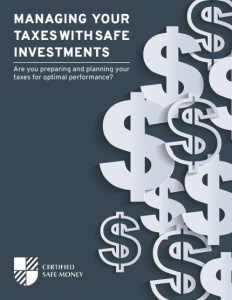Navigating the Treasury Market: Investing in Government Securities with Confidence
Key Takeaways:
- Understanding the Treasury market: The Treasury market offers a wide range of investment opportunities through various types of Treasury securities, including Treasury bills, notes, bonds, and inflation-protected securities. By understanding the different characteristics and features of these securities, investors can make informed decisions and build a diversified portfolio tailored to their investment objectives and risk tolerance.
- Implementing effective investment strategies: Successful navigation of the Treasury market requires the implementation of effective investment strategies, such as yield curve positioning, duration management, and sector rotation. By analyzing trends in the Treasury market and staying abreast of economic indicators and monetary policy decisions, investors can optimize returns and manage risk in their portfolios.
Introduction:
The Treasury market plays a crucial role in the global financial system, providing a safe haven for investors and serving as a benchmark for interest rates worldwide. Navigating this complex market requires a solid understanding of Treasury securities, market dynamics, and investment strategies. In this article, we’ll explore how investors can confidently navigate the Treasury market, capitalize on investment opportunities, and build a diversified portfolio with government securities.
What is the Treasury Market and How Does it Work?
The Treasury market refers to the market where Treasury securities are bought and sold. These securities are issued by the U.S. Department of the Treasury to finance government operations and manage national debt. Treasury securities come in various forms, including Treasury bills (T-bills), Treasury notes (T-notes), Treasury bonds (T-bonds), and Treasury Inflation-Protected Securities (TIPS). Investors can purchase Treasury securities directly from the government through TreasuryDirect or indirectly through brokers, banks, and mutual funds.
Investors Navigate the Treasury Market:
Understanding the Different Types of Treasury Securities:
- Treasury securities come in various maturities, ranging from a few days to 30 years. Treasury bills have short-term maturities of one year or less and are typically used for cash management and liquidity purposes. Treasury notes have intermediate-term maturities of 2 to 10 years and offer fixed interest payments every six months. Treasury bonds have long-term maturities of 20 to 30 years and pay semiannual interest. TIPS provide protection against inflation by adjusting their principal value based on changes in the Consumer Price Index (CPI).
Analyzing Trends in the Treasury Market:
- Investors in the Treasury market closely monitor economic indicators, monetary policy decisions, and geopolitical events that may influence interest rates and Treasury yields. Key indicators include unemployment rates, inflation data, GDP growth, and Federal Reserve announcements. Changes in these factors can impact investor sentiment and drive fluctuations in Treasury prices and yields.
Implementing Effective Investment Strategies:
- Investors employ various strategies to optimize returns and manage risk in the Treasury market. Strategies may include yield curve positioning, duration management, and sector rotation. Yield curve positioning involves adjusting the portfolio’s duration exposure to capitalize on yield curve steepening or flattening. Duration management aims to mitigate interest rate risk by matching the portfolio’s duration to the investor’s investment horizon. Sector rotation involves reallocating assets between different sectors of the Treasury market based on relative value and market conditions.
What Factors Influence Treasury Market Yields and Prices?
Several factors influence Treasury market yields and prices, including:
- Economic Data: Economic indicators such as GDP growth, inflation, employment figures, and retail sales can affect investor expectations for future interest rates and inflation, influencing Treasury yields.
- Monetary Policy: Federal Reserve actions, including changes to the federal funds rate and bond-buying programs, can impact Treasury yields and prices. Expectations for monetary policy decisions play a significant role in shaping investor sentiment and market dynamics.
- Market Sentiment: Investor sentiment, market volatility, and geopolitical events can affect demand for Treasury securities and drive fluctuations in yields and prices. Safe-haven demand during periods of uncertainty may push Treasury yields lower, while risk-on sentiment may lead to higher yields.
Conclusion:
Navigating the Treasury market requires a comprehensive understanding of Treasury securities, market dynamics, and investment strategies. By understanding the different types of Treasury securities, analyzing trends in the market, and implementing effective investment strategies, investors can confidently navigate the Treasury market and capitalize on investment opportunities. Whether you’re a novice investor or seasoned professional, building a diversified portfolio with government securities can provide stability, income, and capital preservation in uncertain times.
Contact Information:
Email: andrewtheretireguy@gmail.com
Phone: 9182105959
Bio:
Andrew Hinshaw is a Benefits and Retirement Specialist who assists those needing help with figuring out “the next step” in heading toward retirement. He has 28 years of experience in multiple fields of service to the public; the last 8 years, specifically with those retired or close to retirement.














